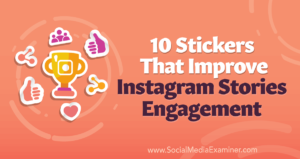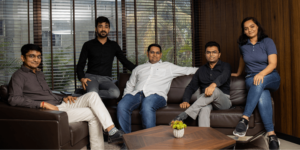Anand Jain, Sunil Thomas, and Suresh Kondamudi were unanimous on one thing: high quality user experience. Years of experience had taught the trio that user experience could be achieved only when an app was useful, relevant, and timely.
This meant an app that “understands the user”, and is able to show the right content to the right user, on the right channel, and at the right time. This necessitated a foundation built on data.
“So, the three of us left our corporate careers and decided to dedicate a year to start CleverTap,” Sunil says. This was in May 2013.
Eight years later, CleverTap helps digital businesses significantly improve user retention by building valuable, long-term relationships with customers.
The founders of CleverTap
Sunil says the idea came from their own day-to-day experiences. Citing an example, he says when a bill is due in three days, the most convenient solution would be for the homepage to have a “pay now” button. When you’re travelling, it would make life easier to have your PNR number and hotel booking details on the home screen itself, instead of having to search in “My Trips”.
“User messages and experiences created with our platform are much more relevant because they are based on actionable, real-time data,” Sunil says.
Building personalised experiences
Today, leading brands such as Zomato, Dream 11, Nykaa, Grofers, PharmEasy, The Meet Group, Fiserv, The Premier league, Sony LIV, AirAsia, Gojek, and Mercedes Benz use CleverTap to create dynamic mobile experiences, boost app engagement, and unlock growth.
Based on user insights from CleverTap, customers build highly personalised campaigns and in-app experiences that engage mobile users across multiple channels, including push notifications, email, SMS, and more.
“Our technology helps businesses automate and personalise the entire user experience at a massive scale, so that every user receives the right content, at the right time, and on the right channel, based on their unique context and intent,” Sunil explains.
Over the last eight years, the team has been able to power more than 10,000 mobile apps globally, has reached over two billion devices, and delivered more than $2 billion in incremental value.
“We service customers across verticals, including media and entertainment, food tech, fintech, ecommerce, edtech, health and fitness, and travel and transportation,” Sunil says.
Data as the differentiator
Sunil believes CleverTap was able to achieve scale as they aimed to solve for user retention from the beginning. The team realised that data would set them apart, and even today believe that it is their core differentiator.
“The first two years of our company were inward facing: we focused solely on building the right technology platform. In the first year, the three of us were coding. Suresh was building the database and ML technologies, Anand was gluing all the middleware together (including setting up all the production operations, servers, etc.), and I was the designated UI/HTML person building out the customer-facing dashboard,” he says.
The co-founders applied to Y Combinator and were selected for their in-person interview. The feedback they received was that their product was great for companies like Amazon and Netflix, because a single user has a lot of history with these platforms.
However, for a majority of brands, people usually come across an offer, redeem or buy, and are done with it.
“We can’t gain more information on user behaviour there. Y Combinator thought of us as enterprise-level software and rejected us. It took us a whole month to comprehend their feedback, primarily because we never saw CleverTap as only serving big enterprises. Once we did, we completely pivoted. We threw out existing code and rebuilt everything from scratch,” Sunil says.
After their seed funding, the core team hired their first set of eight employees for product development and customer success. There wasn’t a product they could sell or even a pricing model, but the founders put it up on the website, “allowing customers to use it in beta”.
The team
These customers were also understanding of the fact that this was an early product and changes were likely – this allowed quick innovation.
“As we kept growing, it was a challenge to keep the rate of innovation high since that required change in management and a few big enterprise customers needed training. Releasing new updates every two or three weeks to production over the years and managing that change with so many different sets of customers across geographies is always interesting,” Sunil says.
The AI and ML push
Although CleverTap was established in 2013, they only started selling the product commercially by mid-2016. The focus till then was on gathering user data, processing it, and making it extremely smart and available for segmentation and action.
The team incorporated AI and ML to improve relevancy and optimise the user experience. The ability to understand user context and intent in real time, with the ability to predict the user behaviour, led to very relevant engagement opportunities.
“At the onset of our journey, we fully realised that the power of AI and ML, predictive segmentation, and big data could bring to our customers. These technologies helped us improve personalisation and recommendations based on context and intent,” Sunil says.
The platform had understood that user retention is a ubiquitous problem that every digital business wants to solve.
“An app loses, on average, about 90 percent of its users within the first 90 days. We have always believed that data and the ability to make data actionable in real time is the necessary foundation to solve this problem. It is not just user behaviour data; contextual data like location, time, preferences, product catalogue, weather, and more helps understand the user’s context and intent at any given moment,” Sunil says.
The CleverTap technology and platform has been purpose-built to solve this problem — it’s the moat and primarily differentiates the team from the rest of the market.
Tapping customer feedback
Sunil explains that working closely with customers and understanding their needs has helped them immensely. This led them to invest in a customer success team early on, before even a sales or a marketing team. This team understood not only the product, but also market needs and the challenges/pain points customers face, and helped in product evolution.
“Early customers like BookMyShow helped get real data flowing into our beta product, and that was invaluable. It allowed us to solve for scale, analysis, and real-time insights,” Sunil says.
“Some customer success team members over time successfully transitioned to become part of our product, account management, and sales teams, just because of their superior understanding of customer needs.”
Another thing that worked for CleverTap was that Sunil moved to the US to get product input from a more mature market. The idea was to leverage insights from product and marketing leaders there and build a product that would be “relevant globally”.
Of scale and speed
CleverTap also focused on micro-segmentation. The ability to segment users based on past behaviour, current actions, and future predictive behaviour creates invaluable user engagement opportunities for progressive digital brands.
Sunil says their scale and speed are also key differentiators, adding that CleverTap can handle delivery throughput of >25 million messages per minute per customer.
All analytics and segmentation tools are actionable in real time, with 12 channels for engagement. The Lifecycle Optimiser gives brands an effective way to understand customers in the context of defined lifecycle stages and transition them from one stage to the next.
Giving examples of the growth their customers have seen, Sunil speaks of:
Fintech: Indonesia-based SME digitisation app Bukukas improved new user activation by 60 percent.
Gaming: Online gaming platform Dream11 improved customer retention by 5x.
Healthcare: Online healthcare app Halodoc boosted retention by 50 percent in 45 days.
Ecommerce: Digital marketplace Carousel increased week three-retention by 71 percent.
Media and entertainment: Entertainment ticketing platform BookMyShow doubled user engagement.
Market and the future
The Software as a Service (SaaS) segment is one of the rising stars of the Indian startup ecosystem, projected to capture 7-9 percent of the global market by 2022. A report by Bain & Company has projected that Indian SaaS companies are expected to generate revenue of $18-20 billion.
CleverTap, which has customers across the world and employees in about 15 countries, competes with the likes of MoEngage, AppsFlyer, LeanPlum, and others. It is now looking to help users by:
- Continuing to use ML and AI to automate user segmentation and lifecycle journeys.
- Optimising each user experience
- Focusing on a more accurate understanding of user context and intent
“We want to offer an end-to-end solution that demystifies user retention. How do you measure it? How do you improve it over time? What users should be targeted? What message and sentiment should be sent? What about when users come into your app? How can their experiences be personalised? How can you keep improving all the time?” Sunil asks.
He adds that the CleverTap team has always embraced the spirit of experimentation and a continuous improvement mindset, and has charted out a long roadmap.
“In terms of metrics, we plan to triple our revenue within the next eight quarters,” Sunil says.

![You are currently viewing [Product Roadmap] How CleverTap used AI and ML to help Nykaa, Zomato, AirAsia, and Dream 11 engage users](https://blog.digitalsevaa.com/wp-content/uploads/2021/06/Product-Roadmap-1623767830740.png)


![Read more about the article [Funding roundup] VsnapU, OLL raise early-stage rounds](https://blog.digitalsevaa.com/wp-content/uploads/2022/08/IMG-4730-1661409550298-300x143.jpg)





